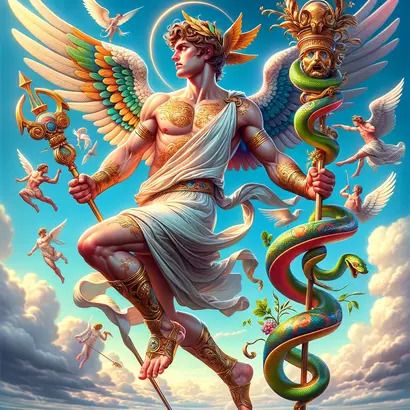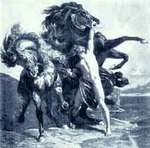
Chione
Chione was the daughter of Daedalion, a courageous, yet merciless, warrior. She was a beautiful lady desired by mortals and immortals, including the gods Apollo and Hermes. Hermes used magic to make Chione fall to sleep and then raped her. Later that night, Apollo visited her as well, transformed into an old woman and also slept with her. As a result of that night, Chione gave birth to the notorious thief Autolycus, whose father was Hermes, and Philammon, by Apollo. Having charmed two gods, Chione boasted that she was more beautiful than goddesses like Artemis. The latter decided to punish her and shot Chione with an arrow, killing her. Daedalion, overcome with grief, tried to kill himself by jumping into the funeral pyre of his daughter, but he was stopped in time. He eventually went to the top of the Mount Parnassus and jumped off, but before he reached the ground, Apollo transformed him into a majestic hawk, feeling sorry for the man's grief.
A different Chione was the goddess of snow in Greek mythology, daughter of Boreas, the god of the North Wind, and Oreithyia. She was the consort of Poseidon, with whom she had a son, Eumolpus.
Chione Q&A
Link/Cite Chione Page
Written by: The Editors of GreekMythology.com. GreekMythology.com editors write, review and revise subject areas in which they have extensive knowledge based on their working experience or advanced studies.
For MLA style citation use: GreekMythology.com, The Editors of Website. "Chione". GreekMythology.com Website, 25 Oct. 2015, https://www.greekmythology.com/Other_Gods/Minor_Gods/Chione/chione.html. Accessed 27 April 2024.




